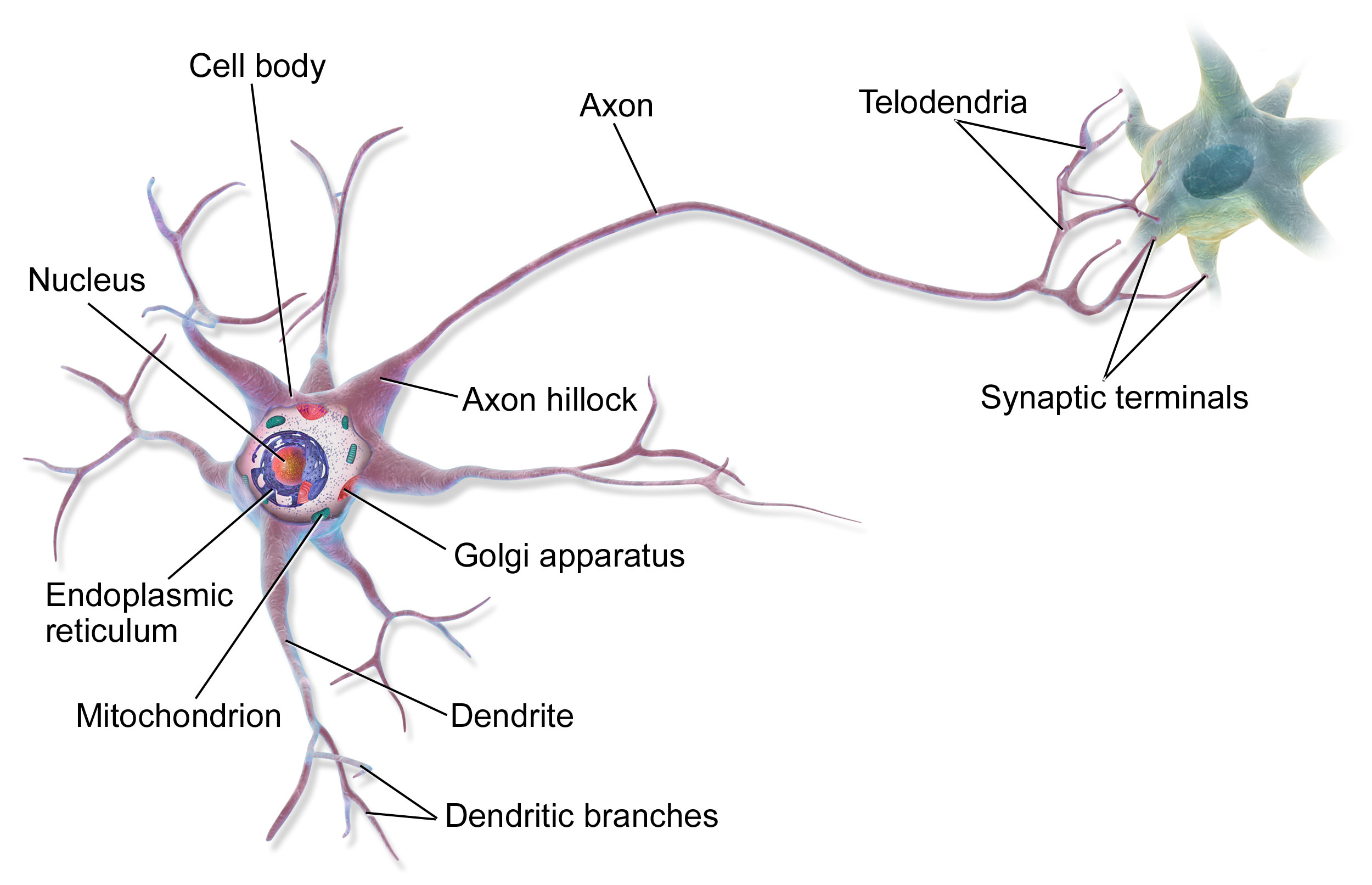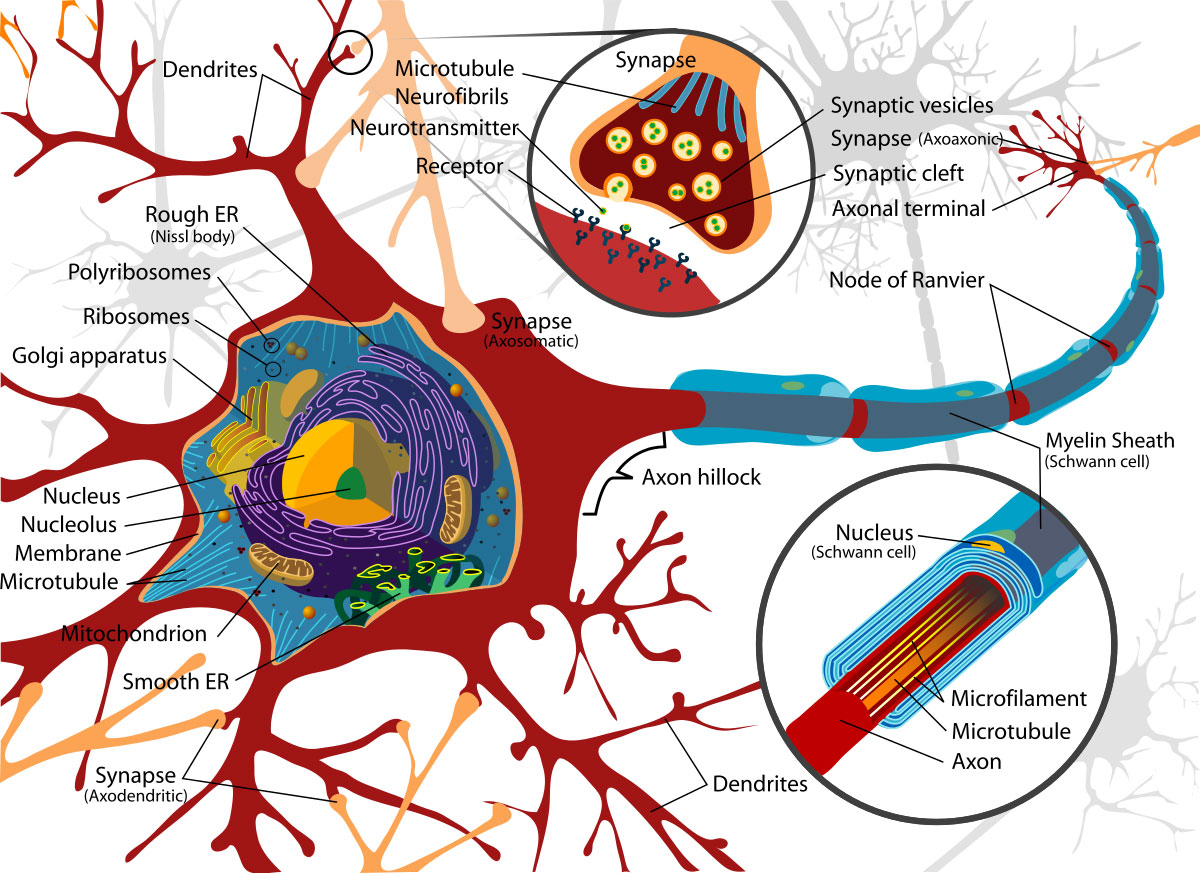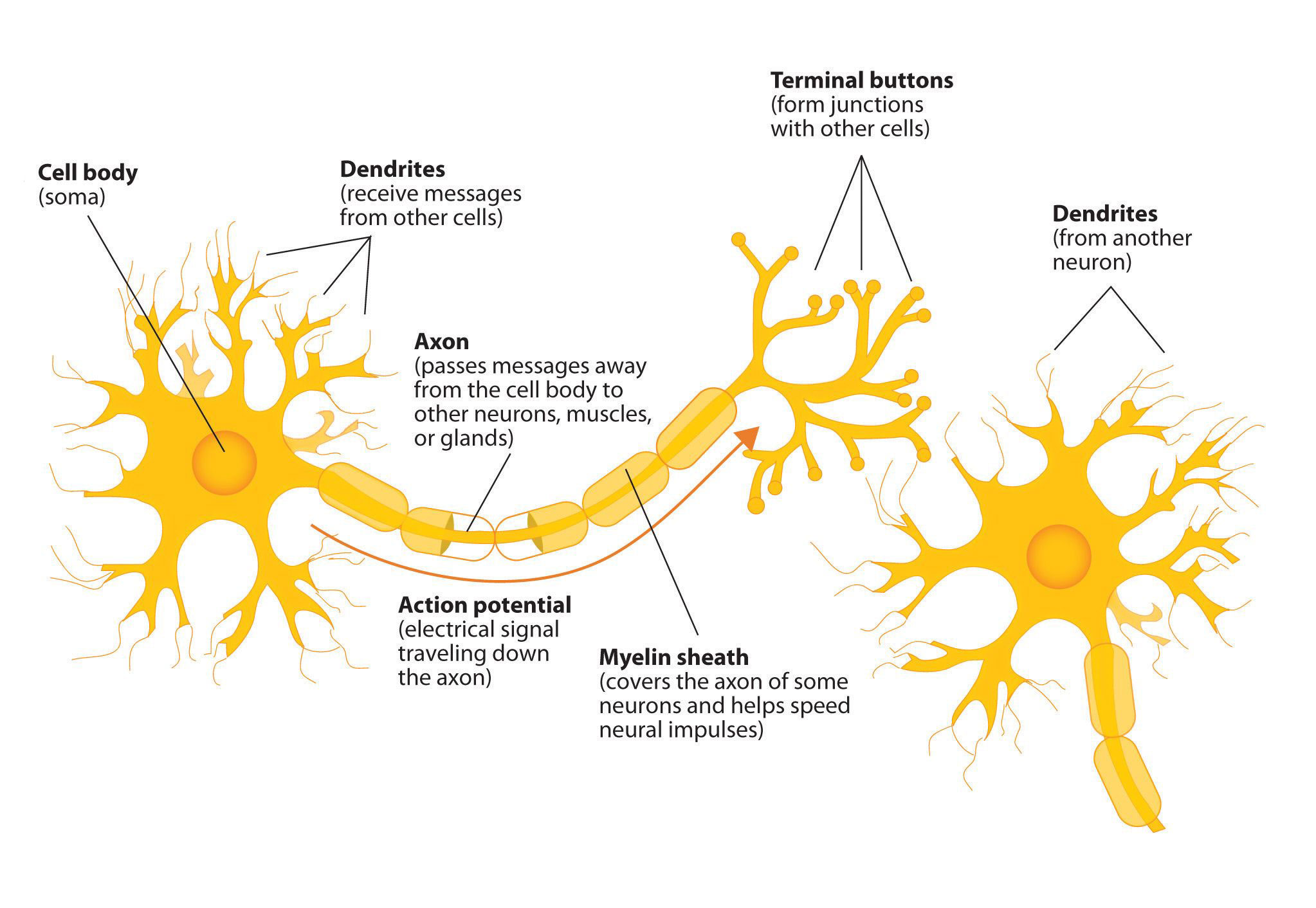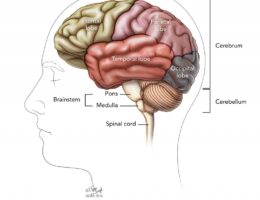Skip to content



- Cell body (soma): the main part of the neuron, containing the nucleus and other organelles.
- Dendrites: extensions of the cell body that receive signals (chemical or electrical) from other neurons or sensory cells.
- Axon: a long, thin extension that transmits electrical signals away from the cell body towards other neurons or effector cells.
- Myelin sheath: a fatty insulation layer that covers and speeds up the transmission of the electrical signal along the axon.
- Node of Ranvier: a gap in the myelin sheath where electrical signals “jump” from node to node, increasing the speed of transmission.
- Axon terminal: the end of the axon, which contains vesicles filled with neurotransmitter chemicals.
- Synapse: the small gap between the axon terminal of one neuron and the dendrites of another neuron, where the neurotransmitters are released to signal the next neuron or effector cell.
- Neurotransmitter: a chemical released by the axon terminal into the synapse, which binds to receptors on the dendrites of the next neuron or effector cell to either excite or inhibit their activity.
You may also like these posts





